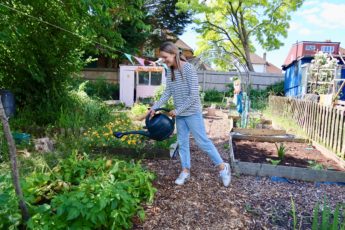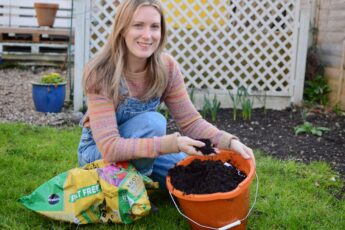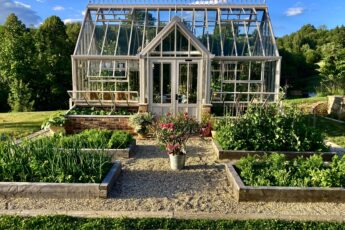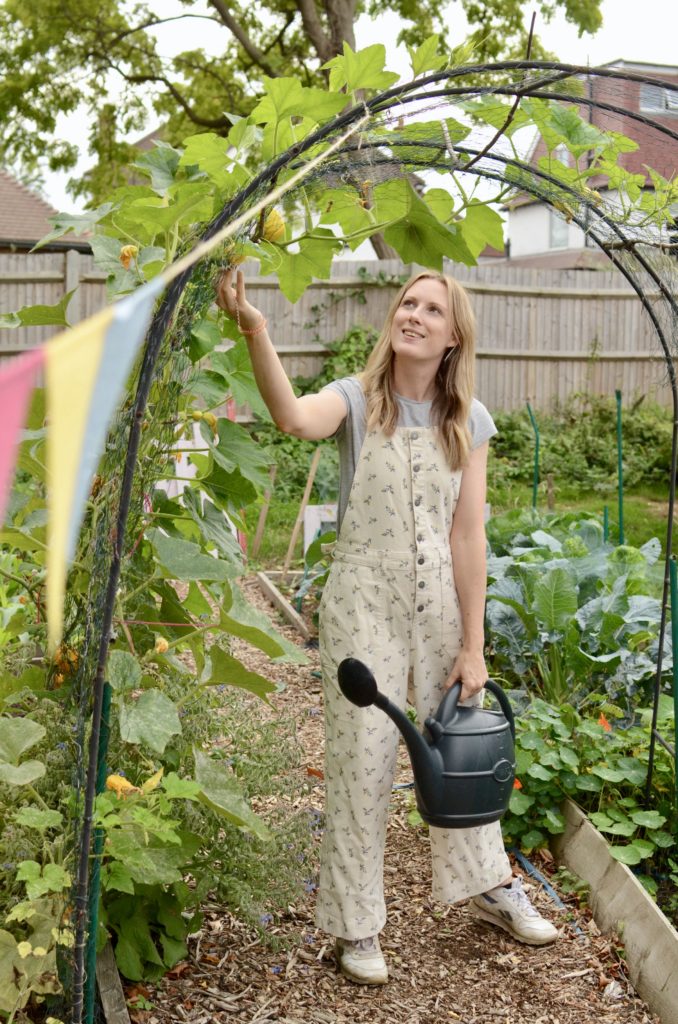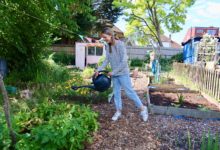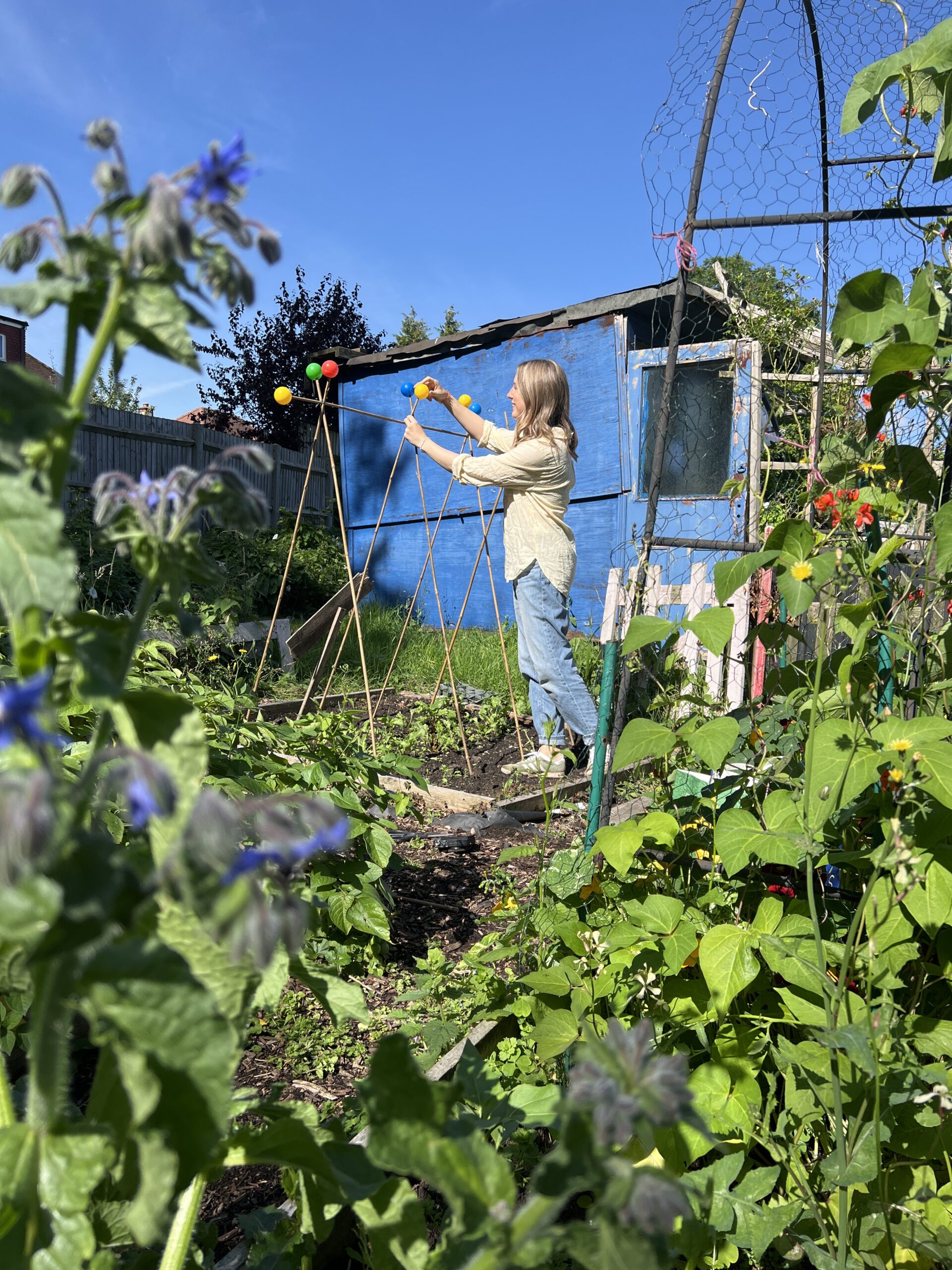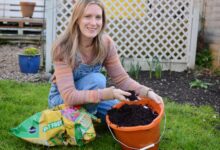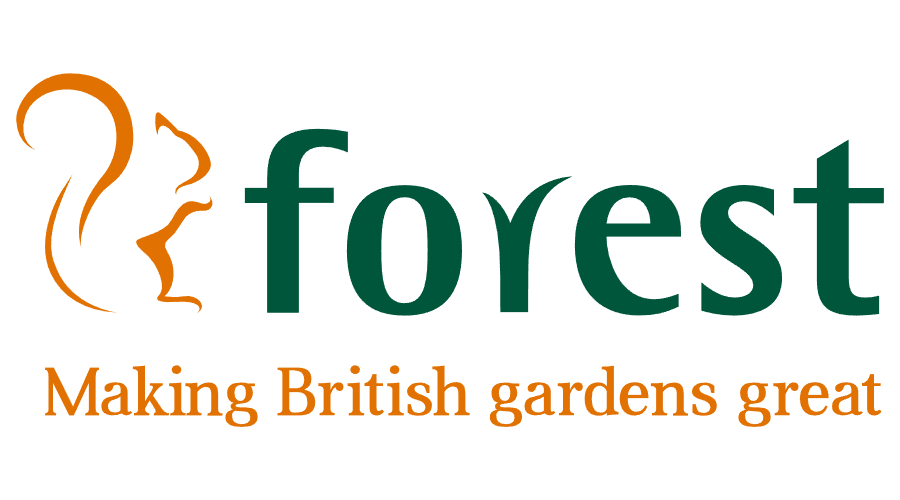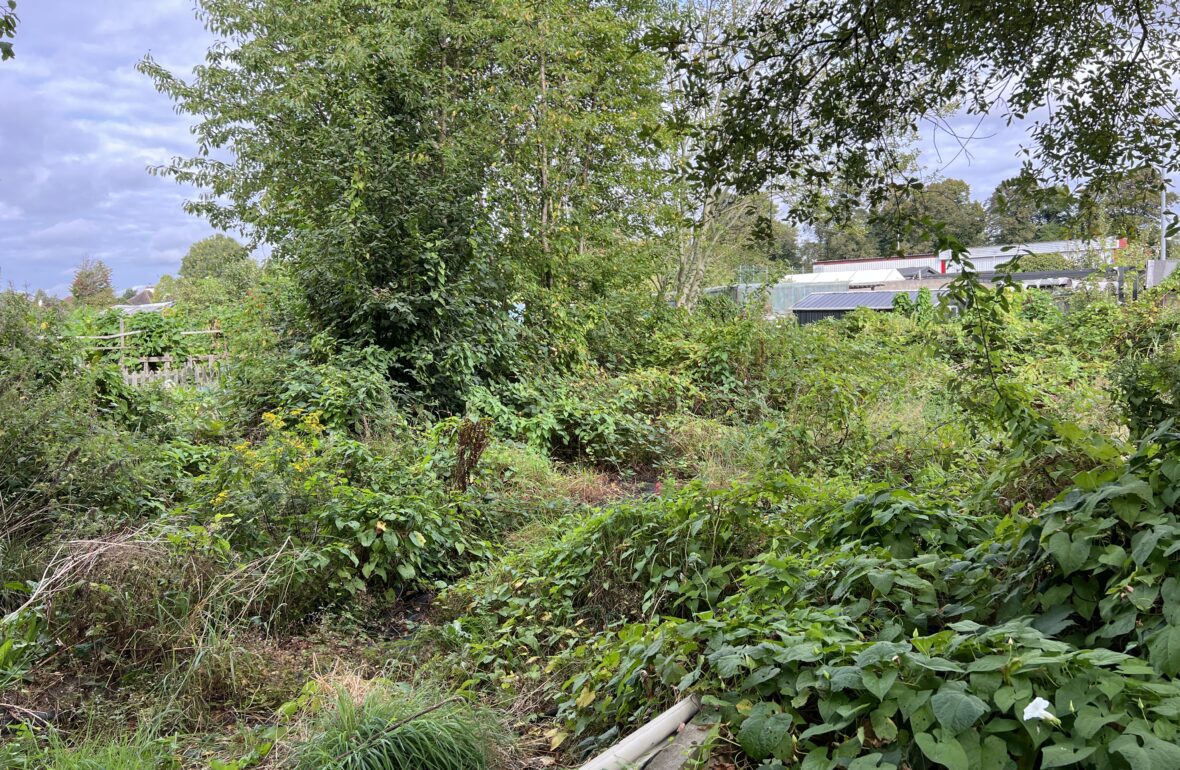
At the beginning of September I got my hands on a second allotment plot at my site. It’s a massive space, totally overgrown and right next to my original plot. The main reason I wanted to take on extra space was because over the last year I feel I’ve just run out of space to do all the things I want to on my plot. But also, I was starting to get annoyed with the jungle next door constantly encroaching onto my plot!
Taking on a new allotment plot is always a challenge. Usually, but not always, they are pretty overgrown and require a lot of work to get into a useable space. My new plot was no exception. The main problem I faced was the strip of complete jungle separating the two plots. I found about 100 logs and large tree trunks underneath the overgrowth which had to be removed by hand before I could even begin digging out the grasses, brambles and small bushes.
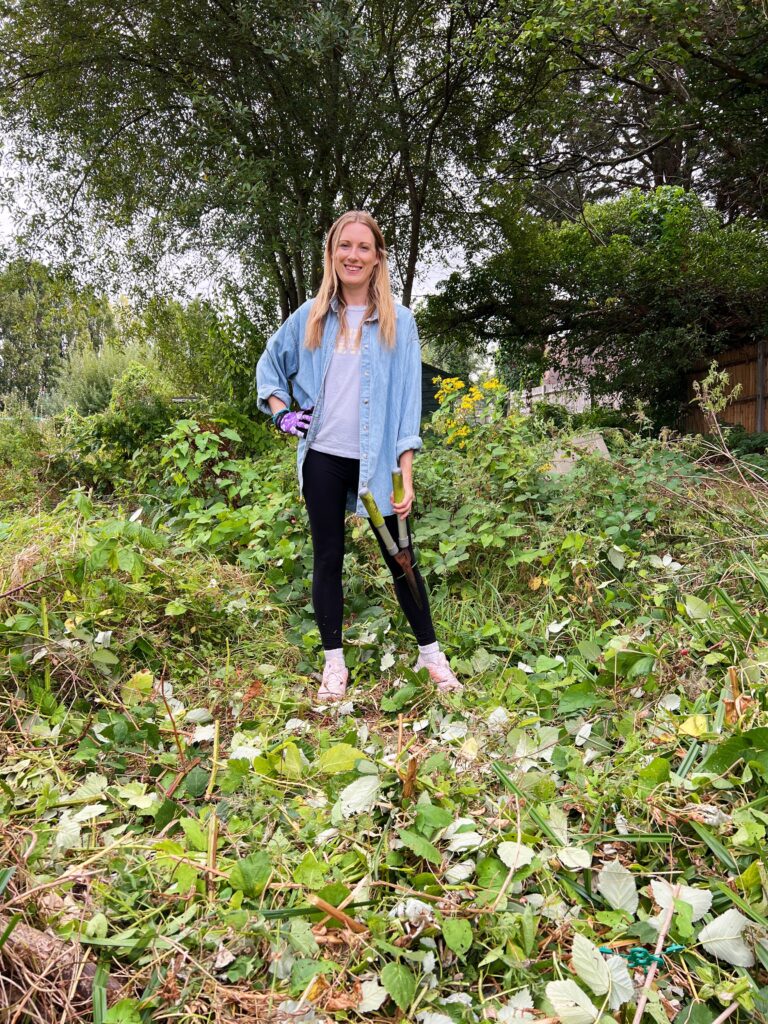
The is heavily shaded thanks to the trees, most of which are in private gardens overlooking the allotment site. This would pose a significant problem if I didn’t already have the space next door already, as shade does limit the amount of crops you can grow. All is not lost though. The heavily shaded area would be great for buildings such as storage, sheds and maybe even a seating area, all of which are desperately needed now I have two plots. There are certainly a fair few crops that will excel in a shaded area, all of which I actually really like to grow, such as brassicas.
WHERE DO YOU START WITH A NEW ALLOTMENT PLOT?
The first place to start is always to clear what is already there. Whether you are going no dig or not, clearing the plot will give you a great overview of the space and enable you to make plans. You may have to dig out a lot of the more invasive weeds such as blackberry bushes or bind weed which can be a nightmare to get rid of once you’ve started growing crops.
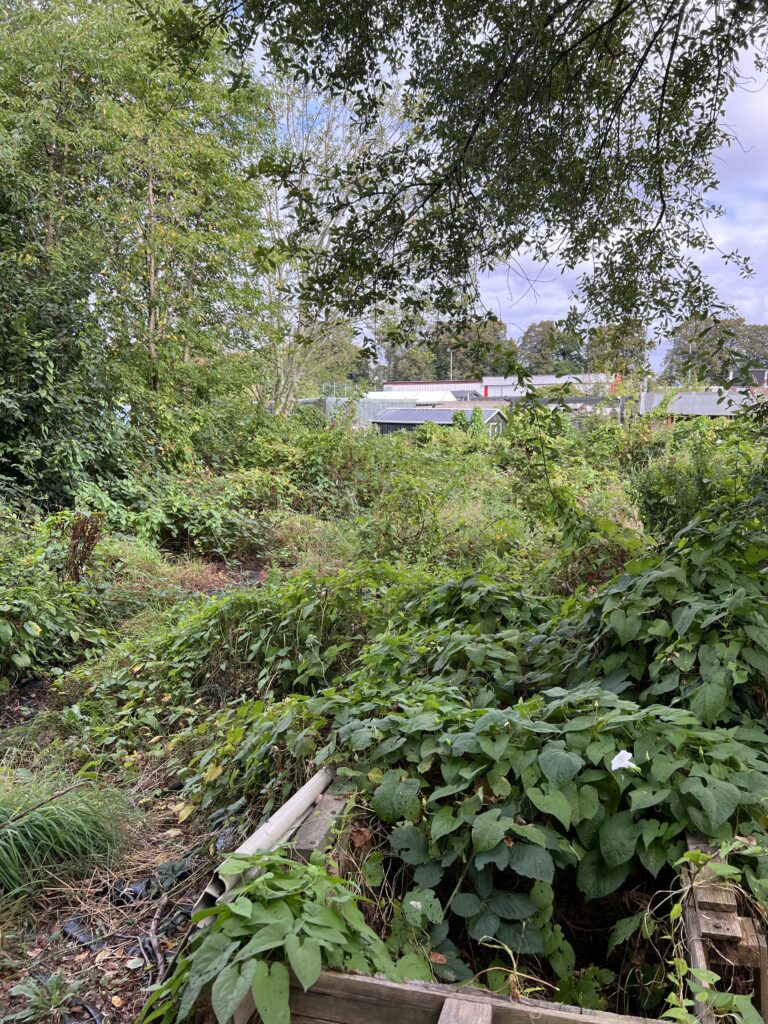
Once the apace is clear, it’s time to make a plan. I like to use squared paper to design the layout of my plot. Of course, the plan usually changes, more than once as I work on the space. I get new ideas, or areas seem much bigger or smaller than I had originally thought.
I’m at the stage where I am beginning to build the structure of the plot. I don’t necessarily use raised beds, but I do like to mark out the borders of my beds with wood, so in a way I guess they are raised beds!
Pathways are being made by laying out thick weed membrane and will eventually be covered with woodchip to prevent weeds from growing and to provide a good surface for using even in the rainy months. Woodchip is great for absorbing water, stops mud patches from forming and looks natural.
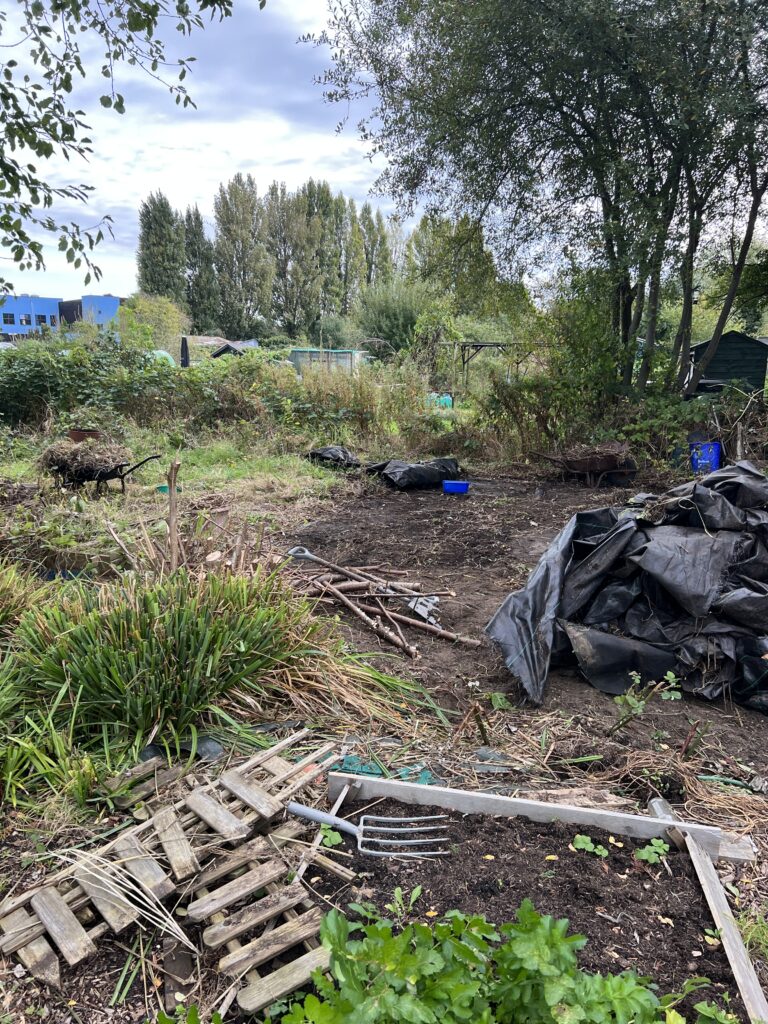
I’ve been layering up cardboard in the beds and then topping with homemade compost to get them ready for planting into in the springtime. Some of my beds are really big, which is exciting actually! I felt that a lot of my beds on my original plot were too small, making it hard to grow more than one crop in them. This time, I’ve made sure there is lots of room to grow several crops together and I’m so excited to try some proper companion planting next year.
HOW TO CHOSE WHAT TO GROW AND WHERE TO GROW IT
I’m lucky that I have been able to observe the allotment plot next to mine for several years before taking it on, so I know exactly where the sun hits and when. For that reason, choosing where to position crops is proving quite easy for me!
The sun hits the back of the plot almost all day long, so sun loving crops will go there. The pumpkins, sweetcorn and flowers will be positioned at the back and at the front, in the shade, I’ll put in brassicas and onions and garlic, crops that tolerate shade.
Choosing what to grow is a personal choice. If I had to give you somme advice, I’d say, grow what you like to eat. Chose easy crops first, crops that will grow away and require little maintenance. You can whack these in as soon as beds are ready and still clear the plot as you go! Carrots, onions, garlic, potatoes and radish are all easy low maintenance crops to whack in.
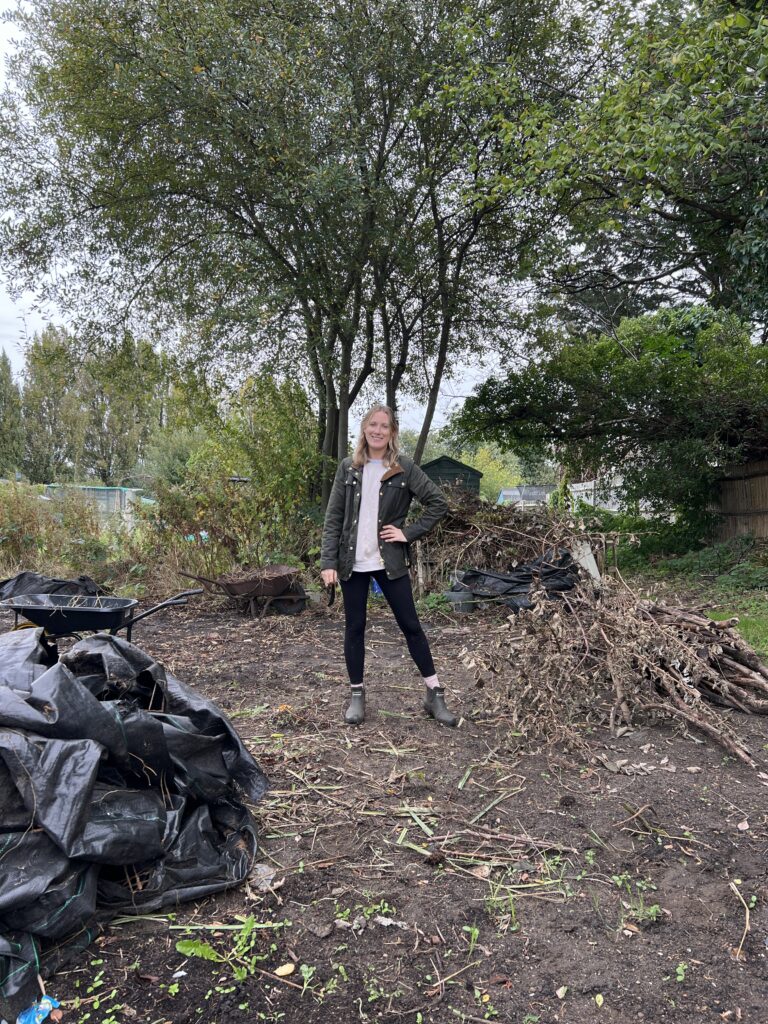
I’m excited to grow a few new varieties of dahlias. Though not strictly a ‘crop’ they are a bit of an allotment essential, attracting wildlife and making great pick again flowers. I have dedicated a huge bed to them and can’t wait to have them all growing.
Potatoes are a great shout for beds where the soil isn’t great. They have an amazing ability to break up the earth and make the soil structure so much better. You will also get a pretty good crop out of them too!
WHAT’S NEXT?
I’ve had a fair few wobbly moments since taking on my new plot. I’ve wondered how on Earth I’m going to cope with two plots and whether I’ve just taken on too much work. I found a tonne of sticks and rubbish buried under a blackberry bush at the back of my plot and it almost tipped me over the edge!
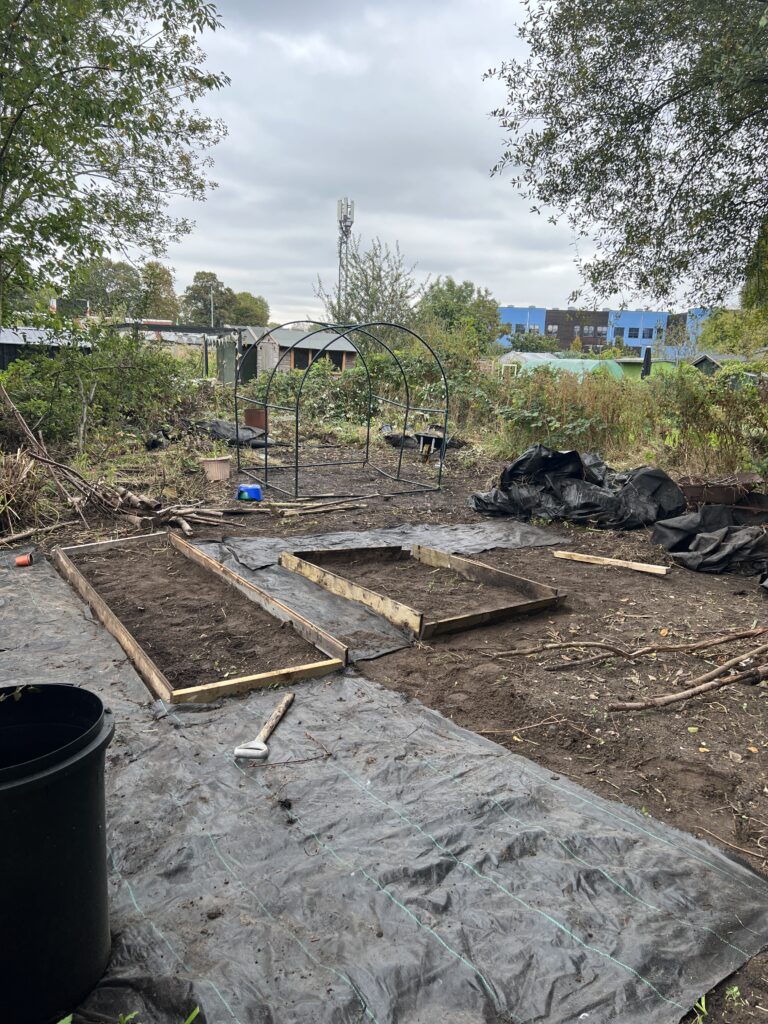
I think for now I’ll be slowly working away, step by step, doing what I can, when I can. I’m trying to enjoy the process of bringing a new allotment plot to a place where it is producing an abundance of crops and flowers. It’s always exciting making little discoveries and finding new corners to explore.
I have so many ideas and I just need to remember that I have a lot of time to work on the plot before the spring! I’m still changing my original plot, making new beds and rearranging crops, so I know that nothing I do is permanent and I can change my mind whenever I want!
So there it is, my new allotment plot. I look forward to updating you with my progress again soon!


